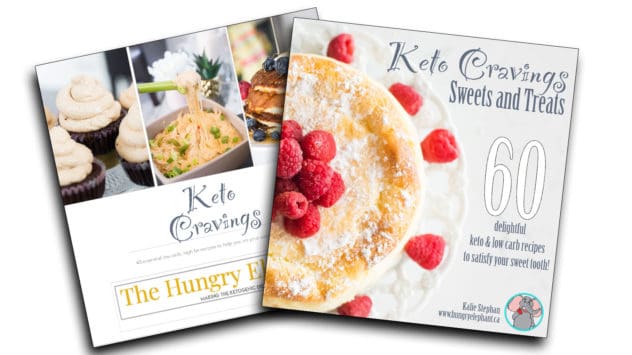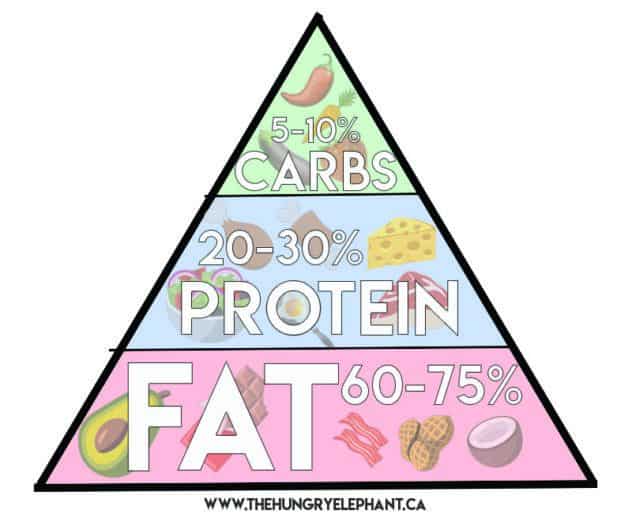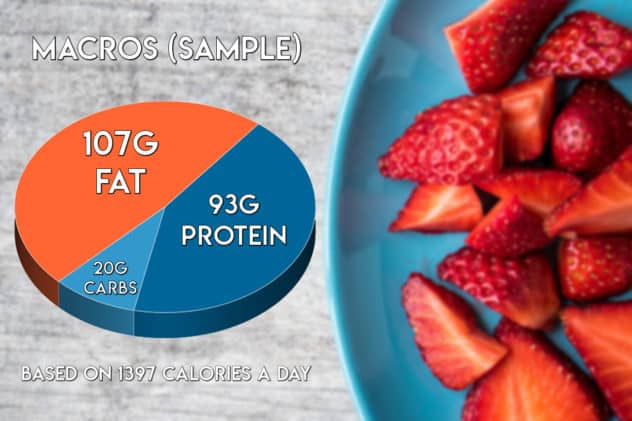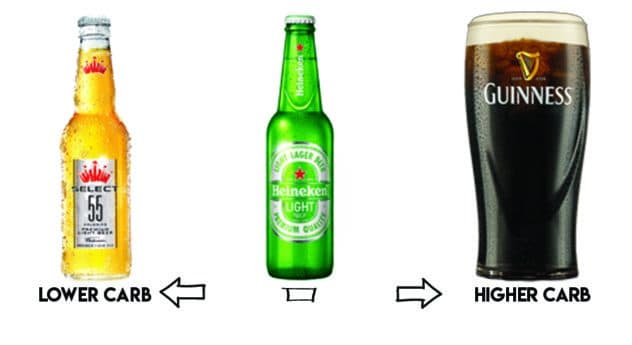Congratulations! You’re on a journey to a better you!
We all know that losing weight is hard. But If you’ve come across this blog, you’ve hopefully found some interesting recipes that will make your weight loss journey a little easier.
Now I know you’re probably thinking: “How can I continue to eat bacon and eggs for breakfast and still lose weight!?” These are perfectly normal questions. In fact, I had the same concerns. But trust me, but it is possible if you do it right! When I first started the ketogenic diet, I weighed just over 200 pounds and have since lost 50 pounds – and that’s without exercise (although that does help). In reality it is the best decision I could have made. I feel more energized, less bloated and my mental health is better than ever.
Now before you go any further, please know that I am NOT a doctor or a nutritionist- but rather someone who has seen tremendous results from a ketogenic lifestyle. Please consult with a doctor before changing your diet. If you’d like to browse some professional keto studies, they can be found in my “In the News” tab.
You have to accept that is a lifestyle change. It is not a ‘fad’ diet and if you treat it as such, you will gain the weight back. I know it sounds scary, but once you hop on the bandwagon and see the changes, you won’t want to go back
If you’re looking for inspiration, check out my 2-week meal plan.

Buy my two cookbooks on Amazon now!
What is Keto?
The Ketogenic Diet is a low-carb high-fat diet that excludes inflammatory foods & sugar like bread, sugar, and some dairy.
Roughly 60-75% of your diet will come from healthy fats like avocado’s, bacon, and unsweetened
chocolate. 20-30%, will come from proteins such as chicken, cheese, and nuts, and 5-10% from complex carbohydrates like vegetables and berries.
When we are on the ketogenic diet, we want to go into a metabolic state called ‘ketosis’. Our bodies, which usually use glucose (a carb) for fuel, will now use ketones (a fat) instead. These ketones are produced by the breakdown of fats in the liver.
It’s important to note that ketosis is VERY different from ketoacidosis. Ketoacidosis is a SERIOUS & life threatening complication that affects mostly those with diabetes or an alcohol addiction. If you want to learn more the difference between ketosis and ketoacidosis – click here.
If you are diabetic and experience any of these symptoms, please see a doctor immediately.
- Excessive thirst.
- Frequent urination.
- Nausea and vomiting.
- Abdominal pain.
- Weakness or fatigue.
- Shortness of breath.
- Fruity-scented breath.
- Confusion.
To get into ketosis, we need to restrict our net carbs to under 25g a day. To calculate your net carbs, simply subtract the dietary fibre (& sugar alcohol, if there is any) from the total carbohydrates listed on the nutritional label of the product. (carbs-fibre=net carbs).
*In places in Europe, like the UK & Ireland, net carbs are simply listed on ingredient labels just as “Carbohydrates” You will not need to do the math.
Calculating Macros
One of the first things that you should do before beginning your ketojourney is to calculate your macronutrients or ‘macros’. Think of macros as three building blocks of nutrition: ‘fats’, ‘proteins’ and ‘carbohydrates’.
You will need to find out how many grams of fat, protein and carbs to eat in a day. Your macros are calculated based on a number of factors including: age, weight, height, and lifestyle. Therefore it is recommended to re-calculate your macros every 10lb’s lost.
You can find a great Keto calculator at Keto Domain.
To track your daily macro intake, you can input your foods into fitness apps like My Fitness Pal.
Keep in mind, your carb macro is the maximum amount you should consume each day. In order for the Ketogenic diet to be effective, you do not want to exceed this number. Your protein macro should be a considered a minimum, and you should aim to eat that much protein a day. Your fat macro is a goal, but you do not need to hit it everyday if you are satiated.
The first few weeks
The best way to get started is to pick a day, clear out all the carb–heavy foods from your home, and then go on in full force. The first few weeks of keto are the hardest. You’ll feel sluggish, tired and maybe even get the keto flu (see below). This is the time you’ll crave everything you can’t eat, so it’s important to keep drinking water and hit your macros. If you can get through the first few weeks, you’re golden!
What can I eat?!
The toughest thing about keto is figuring out what you can and can’t eat. There are a lot of inflammatory foods out there, and what might be good for some may not be for others. For instance, some may find that certain meats or cheese are problematic. I tend to eat tons of dairy; others stay away from it because it can cause inflammation. The best part is that you get to try it out and see what works best for you.
When you are shopping – particularly for dairy – keep in mind you will need to get the FULL fat or sodium version. Don’t skimp and buy the 1/2 fat or 1/2 sodium stuff. Your body needs this as fuel.
Here is a list of a few things you CAN eat. If there’s something you’re curious about, feel free to ask. Some items may be missing, so please let me know and I will add them!
DAIRY
- Heavy Cream (also called whipping cream or double cream)
- Butter (or ghee)
- Cream Cheese (full fat)
- Unflavoured Greek Yogurt
- Cottage Cheese
- Sour Cream
- Creme Fraiche
- Eggs (technically not dairy, but I’ll include it here)
- Full fat cheeses (avoid the processed stuff! Get real cheese!)
Meats & Fish
- Chicken
- Beef
- Turkey
- Lamb
- Pork
- Game & hunting meats
- Salmon
- Tuna
- Shrimp
Vegetables
- Any kinds of lettuce
- Eggplant
- Spaghetti Squash
- Cucumber
- Zucchini
- Mushrooms
- Peppers
- Radish
- Avocado
- Green Beans
- Broccoli
- Cauliflower
- Asparagus
IN MODERATION:
- Carrots
- Onions
- Berries – including Strawberries, blueberries and raspberries.
- Herbs & Spices (Many have a high carb count to watch out for but are good for seasoning meals)
- Tomatoes
- Nuts & seeds (while a good source of protein & fat, some have high carb counts)
OTHER PRODUCTS TO EAT:
- Oils – MCT, olive, coconut, avocado, flaxseed, macadamia and sesame.
- Lemon juice
- Coconut Aminos
- Cocoa Powder or Cacao Butter
- Almond Flour (this includes milk, flour & the nut)
- Coconut (this includes milk, cream, flour, flakes and raw)
- Flax Seeds
- Chia Seeds
- Konjac Noodles
…Just to name a FEW. There is SO much you can do with keto. If you’re confused or have questions, simply comment below!
What NOT to eat
Sometimes it is just easier to have a list at hand of counterproductive foods. Here’s a few no-no’s on the diet.
- Wheat – breads, pasta’s, cakes, most beers.
- Milk & other high lactose dairy (non-Greek yogurt etc)
- Sugar (see sugar alternatives below)
- Soy
- Starchy vegetables (eg. potatoes or some squashes)
- Large or Sweet fruits (apples, pears, bananas, cantaloupe etc)
- Processed meats and cheeses
- Beans & chickpeas
- High carb nuts
Drinking on the Keto Diet
One of the big questions people ask is “can I still go out for drinks?!”. Of course you can! However keep in mind that alcohol can slow down or even stall weight loss – so drink with caution!
Fruity drinks and sweet cocktails tend to be high in sugar and carbohydrates. It is recommended to instead opt for a dry wine or spirits like gin, whiskey and vodka as they contain little to no carbs.
For all you beer drinkers – beware of of heavier beers (like Guinness) as they are high in carbohydrates. Instead, opt for these low-carb alternatives I’ve provided below:
- Budweiser Select 55 (1.9 carbs)
- Bud Lite (5 carbs)
- Miller Lite (3.2 carbs)
- Coors Lite (5 carbs)
- Heinekin Lite (6.8)
- Miller 64 (2.4 carbs)
- Labatt Blue (5 carbs)
- Corona Light (5 carbs)
*carbs are per bottle/12 fl. oz.)
A rule of thumb is that the darker the beer, the more carbs it will have.
Sugar Alternatives
Ditching the sugar is the toughest part for most people. Since sugar is pure carbs, it’s off limits! It’s especially hard to wrap your mind around because sugar is in almost everything. So many of us who live a keto lifestyle, like to indulge ourselves and use low (or no) calorie sweeteners & sugar substitutes. However, there are a few downsides: some have a lingering aftertaste, others cause digestive issues, and some have a high glycemic index and may raise your blood sugar.
Here are a few of the top sugar substitutes I’ve used on keto:
- Stevia
- Erythritol
- Monk Fruit
- Xylitol (Important note: This is extremely toxic to dogs)
- Sucralose
- Aspartame
Stevia – a natural sugar derived from a Stevia rebaudiana plant. This sugar alternative has a Glycemic index of 0 – meaning it will not raise your blood sugar. However some people report that stevia comes with an aftertaste.
Erythritol – probably one of the most common substitutes on keto. You can find it in stores under the name “Swerve”. Erythritol has a glycemic index of 0 (and approx. 5 net carbs per 100g). It has no aftertaste and also caramelizes like sugar.
Monk Fruit – another natural sugar. It derives from Luo Han Guo in China. It has a glycemic index of 0, however it is hard to find in raw form. Stores usually carry a stevia/monk fruit or erythritol/monk fruit mix.
Xylitol – This sweetener carries a high glycemic index (13), so it will spike your blood sugar. (In comparison, regular sugar has a glycemic index of 63) Xylitol is also incredibly dangerous for pets so keep it tucked away safely.
Sucralose & Aspartame – both artificial. They are commonly found in soda/pop/fizzy drinks but you can also find them as sweeteners (sweet’n’lo etc). Aspartame has a glycemic index of 0, while sucralose can vary.
** My suggestion – stay away from the sweeteners for the first couple months of keto to get your body adjusted to this lifestyle and curb sugar cravings. When you do decide to use one, try Stevia, Erythritol or a Monk Fruit Blend but I tend to stay away from the artificial stuff.
Keto Flu, Side Effects & Electrolytes
Keto flu is something nearly everyone experiences at some point in their journey and is one of the reasons so many people give up. . You might feel rundown, nauseous, or have a headache in the first few weeks of ketosis . The reason why? You’re running low on electrolytes, which are sodium, magnesium and potassium. The keto flu can easily be cured (or prevented) by taking a magnesium supplement daily and salting your foods. Alternatively, you could also drink a cup of broth or pickle juice to combat keto flu.
Some other side effects that have been reported on keto:
- Constipation (Add some powdered fibre!)
- Hair Loss (Biotin, collegen)
- Awful breath (usually goes away in 1-2 weeks)
- Dizziness (Potassium/dehydration – eat some potassium-rich foods & drink water)
- Muscle Cramps (Take some magnesium!)
- Heart Palpatations (electrolytes! see above)
Exogenous Ketones
There are a TON of products out there claiming to have ketones in them. Those are called exogenous ketones since they are not produced by your body. Some people claim that they help them with that extra boost in of energy, others say it didn’t help them at all. It’s all up to you if you want to use them. Personally, I haven’t. I find it’s better to let your body produces the ketones that it needs. Anything that comes from the outside will most likely just be flushed right out.
**There are some pyramid schemes for selling exogenous ketones so.. beware!
I ate carbs.. now what!?
What the people really want to know – what happens if I cheat. Well here’s the deal. If you have a quick candy bar or resto meal once a month – little to nothing will change. A big meal and continuous cheat meals (i’m talking more than once a week) will throw your body into a cycle of getting in and out of ketosis. It’s just not healthy or worth it. Your cravings for carbs will spike, and you may not be able to resist that temptation.
If you’ve cheated, it’s best to just hop back on the bandwagon. Some people like to fast to reset their bodies but you don’t have too. Just go back to low carb.
In Conclusion
Ok – let me recap because that was a lot! Basically eat low carb and keto approved foods, keep your net carbs under 25g a day, drink lots of water, eat lots of fat and keto on! It’s not as hard as it sounds, trust me. It just takes some getting used to.
Again, reminder – I am not a doctor or a nutritionist. Please consult yours before you change your diet.





